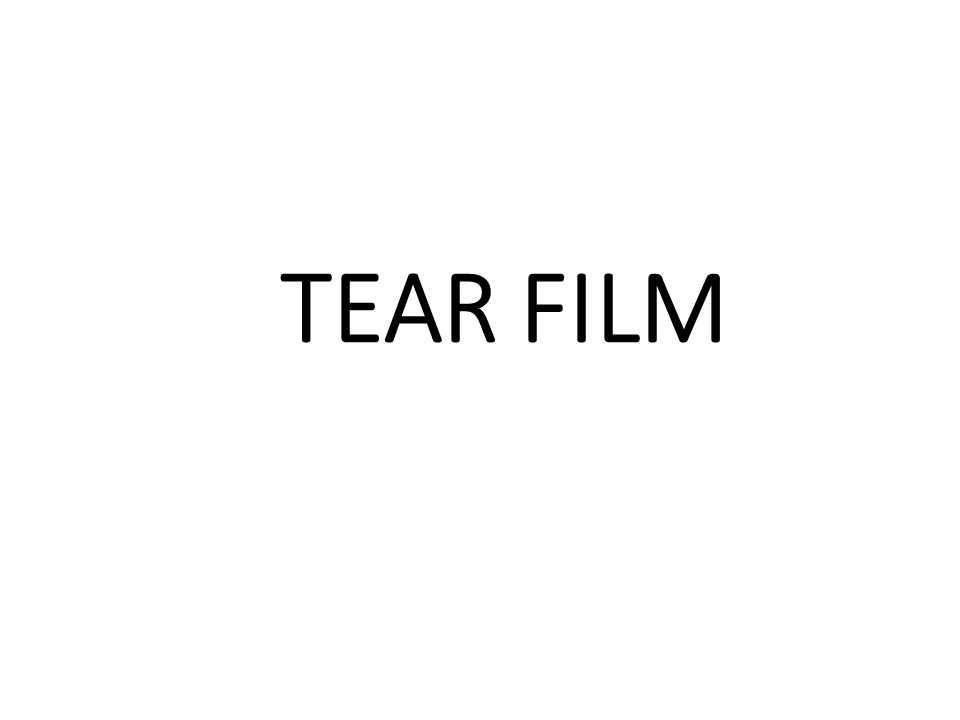tear film - PowerPoint PPT Presentation
Title:
tear film
Description:
bleeh – PowerPoint PPT presentation
Number of Views:2
Title: tear film
1
TEAR FILM
2
Definition
- Tear film is the fluid covering the cornea and
conjunctiva produced by lacrimal glands
3
Cont
- Lacrimal apparatus is responsible for its
production and transportation - The lacrimal apparatus comprises
- (1) Main lacrimal gland,
- (2) Accessory lacrimal glands
- (3) Lacrimal passages, which include puncta,
canaliculi, lacrimal sac and nasolacrimal duct.
4
(No Transcript)
5
- The tear film consist of three layers, which from
posterior to anterior are - mucus layer,
- aqueous layer and
- lipid or oily layer
6
(No Transcript)
7
NAME CONTENTS SECRETORS FUNCTIONS
Lipid layer 100 molecules thick bipolar lipid Phospholipids Meibomian glands (or tarsal glands) Glands of Zeis Coats the aqueous layer,retard evaporation provides a hydrophobic barrier to prevent tear overflow. Thus, the tear fluid deposits between the eye proper and oil barriers of the lids.
8
Aqueous layer Water, electrolytes, and other substances such as proteins (e.g., antibodies, lipocalin, lactoferrin, lysozyme,and lacritin) Solutesurea, glucose,lactate Lacrimal glands Oxygenation to cornea, antimicrobial role , wash away debris, maintain a constant electrolyte composition over the ocular surface epithelium
Mucous layer Mucins, electrolytes,water and proteins Conjunctival goblet cells,henle and manz glands Coats the cornea and provides a hydrophilic layer and allows for even distribution of the tear film. Protective and lubricative function.
9
Secretion of tears
- Tears are continuously secreted throughtout the
day by - Accessory lacrimal glands i.e Glands of Klause
- and Glands of Wolfring(basal secretion) And main
lacrimal glands (reflex secretion) - Reflex secretion is in response to sensations
from the cornea and conjunctiva, probably
produced by evaporation and break-up of tear film.
10
- Hyperlacrimation occurs due to irritative
sensations from the cornea and conjunctiva. - Afferent pathway of this secretion is formed by
fifth nerve and efferent by parasympathetic
(secretomotor) supply of lacrimal gland.
11
(No Transcript)
12
Elimination of tears
- Tears flow downward and medially across the
surface of eyeball to reach the lower fornix and
then via lacus lacrimalis in the inner canthus
from where they are drained by lacrimal passages
into the nasal cavity. - This is brought about by an active lacrimal pump
mechanism constituted by fibres of the
orbicularis (especially Horners muscle) which
are inserted on the lacrimal sac.
13
Elimination of tear cont
- When the eye lids close during blink, contraction
of these fibres distends the fundus of the sac,
creates therein a negative pressure which syphons
the tears through punctum and canaliculi into the
sac.
14
Elimination of tear cont..
- When the eyelids open, the Horners muscle
relaxes, the lacrimal sac collapses and a
positive pressure is created which forces the
tears down the nasolacrimal duct into the nose
15
Clinical Importance
- Qualitative or Quantitative abnormality of the
tear film may occur as a result of - Change in amount/composition of constituents eg
Eg Keratoconjuctivitis sicca(dry
eyes),blepharitis and contact lens
users-increased osmolarity - Uneven dispersion due to corneal surface
irregularitiesscars,inflammation - Ineffective distribution due to eyelid-globe
incongruitycongenital/acquired eyelid
disfunction.
16
- The end

